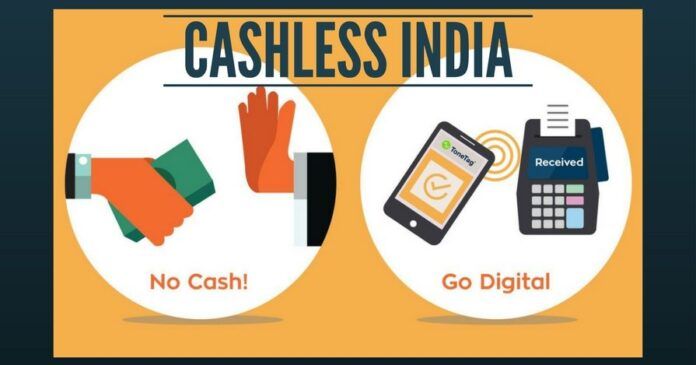
Part 1 of this series can be ‘accessed ‘ here. This is Part 2.
In our last article, we discussed the advantages offered by digital transactions and its potential to change the way the world transacts. All the promised benefits notwithstanding, we are yet to see a large-scale absorption of such digital technologies, e.g. blockchain. We also discussed the concept of foundational technologies and why certain technologies require a different approach for its widespread absorption. We will now set out to discuss the impact of foundational technologies such as the one that blockchain requires.
“A smart contract is a set of promises, specified in the digital form, including protocols within which the parties perform on these promises.”
Any transaction has trust as its fundamental embodiment. Trust is formed from a social/cooperative support or from prior actions and responses that are deemed acceptable to the ‘parties’ concerned. A society which enforces the later part depends on contracts while the former reflects a community-based collaborative approach.
Transactions create relationships and contracts are assumed to capture relationships in a rational way. The contract approach assumes trust to be the first absent and hence the need to create a series of agreements that bind the relationship and makes promises ‘enforceable’. Transactions, especially those that have significant monetary impact/quality impact/conformance to specifications and requirements heavily depend on contracts as a means to define performance and deter falsification.
In the absence of trust, what do such transactions cause? An absence of security in the actions. If a contract becomes falsified, the ‘parties’ to the contract lose faith in the relationship thus created and become insecure. Hence, with the logic driven a sense of rationality, can we create a contract that is algorithm driven and provide the sense of ‘ideal’ security all time? This, in short, is a smart contract.
“A smart contract is a set of promises, specified in the digital form, including protocols within which the parties perform on these promises.” (Szabo, 1995)
“Smart contracts reference that property in a dynamic, often proactively enforced form, and provide much better observation and verification where proactive measures must fall short.” (Szabo, 1997)[1]
Even before the term “blockchain” was popularized and became part of the digital contract parlance, the key defining characteristics of digital contracts have been identified as follows:
- Set of promises or the key clauses of the contract in digital form
- Performance protocols clearly defined
- Transactions and responses captured in real time hence providing visible milestones of performance to all parties involved
- Ease of verification between promise and performance due to data capture
While the advantages of creating, and enforcing contracts in a digital environment is evident, readers will understand that the supporting ecosystem to capture transactions and encrypt them is a humungous task and involves a change in the way transactions are conceived and enforced.
BLOCKCHAIN technologies give a sense of security by channelling one’s behaviour in a pre-defined way and with the presumption that any change in the contract is visible to the entire world
A popular example of a Blockchain is the BITCOIN. BITCOIN and its associated protocols is an example of a financial transaction contract. A logical extension of the protocol to create a contract of any type (and not restricted to financial contracts) of underlying ‘property’ helped us create BLOCKCHAIN. What we require is a system that can act as a bridge between the physical transaction and virtual / internetworked transaction.
In the first article, we introduced the concept that foundational technologies are hard to be accepted and do not follow the traditional technology and product lifecycle of growth. We also highlighted blockchain as a foundational technology. Why?
The answer lies in trying to differentiate a contract that is legal and that is smart. Can we have a contract that is both legal and smart? If we can answer this, we may be able to take the first steps into a digitally enabled world.
A contract has three stages
- Agreement
- Formalisation of the agreement
- Execution
The formalisation of a contract is either through the contract law or through a smart contract technology. The difference between these two methods is that law, as it is fashioned today, assumes certain behaviour from the parties to the contract. In case of breach, the law stipulates a compensation/punishment mechanism to award justice to the parties to the contract. The successful execution of the contract depends on either compliance of parties to the contract and in its absence, implementation of the law. The contract in itself, cannot enforce compliance. However, a smart contract moulds the behaviour of the parties to perform in a manner agreed to in the contract. The tight bonding to the agreement is visible and naked in the smart contract while it is the opposite in the contract law.
Till the algorithms, computing power and large-scale networks evolved, we have been happier with the ex-post way of contract law. Stronger the deployment ex-post, more developed we assume the society to be. Such deployments, in reality, are indicators of the absence of social trust and are the seeds to deploy the technology-driven contracts and make it ex-ante.
BLOCKCHAIN technologies give a sense of security by channelling one’s behaviour in a pre-defined way and with the presumption that any change in the contract is visible to the entire world. By making the smartness of the contract visible to the entire world, it ensures peer pressure as a subtle mechanism of security enforcement. The blockchain technology builds on the fundamentals of bitcoin and forces the argument that the smart contract code is trustworthy than the individuals who are ‘parties’ to a contract.
This gives us a hint of why blockchain is difficult to get full-scale deployment and why it is dangerous to preach that blockchain would replace all types of transactions and make the world a happier place.
We will have to start with the understanding of how a normal transaction takes place with the current technologies and how the same transaction will square out in a blockchain. We will use a sample transaction to explain this process.
Assume that a hypothetical company called SkyRocket wants to purchase inventory, pay the supplier. and settle the transaction through bank transfer. Let us try to understand the key stakeholders in the process, methods of transaction validation and squaring off the transaction as is done today with the current methods and available technologies.
| Step | Process Description | Process Owner | Approving authority |
| Step 1 | The Material Request Planning Software will alert Sky Rocket that inventory needs to be replenished | Purchase Department of Sky Rocket | Purchase Manager |
| Step 2 | Approved vendor list will be scrutinized and the vendor will be shortlisted as per purchase policy | Production team, Design team, finance team | Purchase Manager |
| Step 3 | Order will be placed | Purchase Manager | |
| Step 4 | Vendor will confirm receipt of order and agree upon terms of delivery | Vendor | |
| Step 5 | Vendor will deliver the goods to Sky Rocket as per terms of delivery | Vendor | |
| Step 6 | Sky Rocket will confirm receipt and process the transaction for payment as per agreed terms | Purchase Department | Accounts Department |
| Step 7 | Sky Rocket will initiate payment to vendor | Accounts Department of Sky Rocket | |
| Step 8 | Vendor will confirm receipt |
Sky Rocket may be using an MRP software and an accounting software and settling the transaction through NEFT/RTGS or IMPS. Yet the transaction requires manual interventions and approvals.
In the next part, we will see how this transaction can be mapped to a smart contract / BLOCKCHAIN and what we require moving forward from foundational technology
To be continued…
References:
[1]http://www.fon.hum.uva.nl/rob/Courses/InformationInSpeech/CDROM/Literature/LOTwinterschool2006/szabo.best.vwh.net/idea.html
- Part 3: Cashless India – distant dream distinct reality - September 27, 2017
- Part 2: Cashless India-A distant dream or distinct reality? - September 24, 2017
- Part 1: Cashless India-A distant dream or distinct reality? - September 21, 2017











Thank you for clarifying your intentions. If you think the Govt. will permit block chain usage, good luck to you. Besides blockchain technology depends entirely on a digitalised system, servers etc which are subject to EMP pulses attacks, hacking etc .
I do attribute a good motive to you.
Good Luck anyway.
Thanks for the comments. The article is more about the foundational shift required for cashless transactions than cashless transactions per se. The focus is on blockchain technology.
Long time since i commented.
To summarise. Cashless is defenseless.
Ask your Govt the safety of “Money” in your bank account. Ask RBI how much?. Nearly Zilch. In Bank Lockers – Zilch – no responsibility
Do you know the law on Banks?
There is too much debt in the system worldwide. “Money” that can never be repaid.
The rural people in India have never trusted their”Money” with banks. “Money” today is notional – different pieces have different sizes , different colours , different attributes and is called “Legal Tender”. It is notional pieces of paper that is given value as perceived by the Govt.
Believe your Govt and they will sell you the Eiffel Tower. It’s easy for them to make your paper assets disappear.